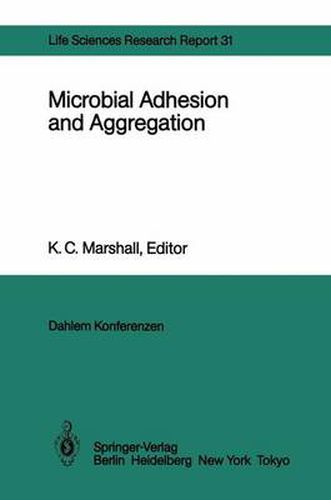Readings Newsletter
Become a Readings Member to make your shopping experience even easier.
Sign in or sign up for free!
You’re not far away from qualifying for FREE standard shipping within Australia
You’ve qualified for FREE standard shipping within Australia
The cart is loading…






This title is printed to order. This book may have been self-published. If so, we cannot guarantee the quality of the content. In the main most books will have gone through the editing process however some may not. We therefore suggest that you be aware of this before ordering this book. If in doubt check either the author or publisher’s details as we are unable to accept any returns unless they are faulty. Please contact us if you have any questions.
usage of the terms substrate and substratum. A substrate (pI.: substrates) is a material utilized by microorganisms, generally as a source of energy. A substratum (pI.: substrata) is asolid surface to which a microorganism mayattach. REFERENCES (1) Marshall, K.C. 1976. Interfaces in Microbial Ecology. Cambridge, MA: Harvard University Press. (2) ZoBell, C.E. 1943. The effect of solid surfaces upon bacterial activity. J. Bacteriol. 46: 39-56. Standing, left to right: Paul Rutter, Rolf Freter, Mike Silverman, lan Robb, Hinrich Mrozek, Frank Dazzo, David Gingell Seated, left to right: Garth Jones, Stanislawa Tylewska, Staffan Kjelleberg, Ellen Rades-Rohkohl, Kevin Marshall Microbial Adhesion and Aggregation, ed. K.C. Marshall, pp. 5-19. Dahlem Konferenzen 1984. Berlin, Heidelberg, New York, Tokyo: Springer-Verlag. Mechanisms of Adhesion Group Report P.R. Rutter, Rapporteur F.B. Dazzo H. Mrozek R. Freter E. Rades-Rohkohl D. GingeIl I.D. Robb G.W. Jones M. Silverman 8. Kjelleberg 8. Tylewska K.C. Marshall INTRODUCTION The subject, Mechanisms of Microbial Attachment, has proved to be a fertile sour ce of argument between both microbiologists and physical chemists. In order to find common ground for discussion, the group endeavored to come to a consensus regarding a number of definitions pertinent to the subject. Some of these are described in the text and others will be found at the end of this report.
$9.00 standard shipping within Australia
FREE standard shipping within Australia for orders over $100.00
Express & International shipping calculated at checkout
This title is printed to order. This book may have been self-published. If so, we cannot guarantee the quality of the content. In the main most books will have gone through the editing process however some may not. We therefore suggest that you be aware of this before ordering this book. If in doubt check either the author or publisher’s details as we are unable to accept any returns unless they are faulty. Please contact us if you have any questions.
usage of the terms substrate and substratum. A substrate (pI.: substrates) is a material utilized by microorganisms, generally as a source of energy. A substratum (pI.: substrata) is asolid surface to which a microorganism mayattach. REFERENCES (1) Marshall, K.C. 1976. Interfaces in Microbial Ecology. Cambridge, MA: Harvard University Press. (2) ZoBell, C.E. 1943. The effect of solid surfaces upon bacterial activity. J. Bacteriol. 46: 39-56. Standing, left to right: Paul Rutter, Rolf Freter, Mike Silverman, lan Robb, Hinrich Mrozek, Frank Dazzo, David Gingell Seated, left to right: Garth Jones, Stanislawa Tylewska, Staffan Kjelleberg, Ellen Rades-Rohkohl, Kevin Marshall Microbial Adhesion and Aggregation, ed. K.C. Marshall, pp. 5-19. Dahlem Konferenzen 1984. Berlin, Heidelberg, New York, Tokyo: Springer-Verlag. Mechanisms of Adhesion Group Report P.R. Rutter, Rapporteur F.B. Dazzo H. Mrozek R. Freter E. Rades-Rohkohl D. GingeIl I.D. Robb G.W. Jones M. Silverman 8. Kjelleberg 8. Tylewska K.C. Marshall INTRODUCTION The subject, Mechanisms of Microbial Attachment, has proved to be a fertile sour ce of argument between both microbiologists and physical chemists. In order to find common ground for discussion, the group endeavored to come to a consensus regarding a number of definitions pertinent to the subject. Some of these are described in the text and others will be found at the end of this report.